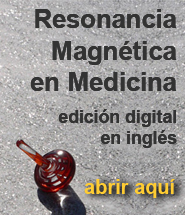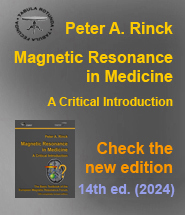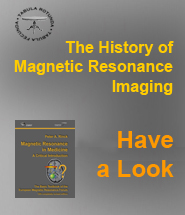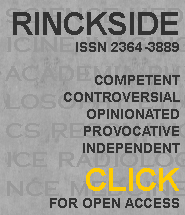20-06 Clinical Applications
At about this time, MR imaging started being clinically evaluated. One of the most admirable research groups worked at Hammersmith Hospital in London. The head of the group was Robert E. Steiner, but Ian R. Young and Graeme M. Bydder were the moving forces. Among others, Frank H. Doyle and Jacqueline M. Pennock supplemented this group.
Because MR imaging is at the crossroads between medicine, biology and chemistry, physics, and computer science, research groups with strong interdisciplinary relationships and cross-fertilization became scientifically extremely fruitful, …
 |
|
… which led to the 'odd couple' system, involving one physician and one scientist. At congresses, you would always see Graeme Bydder (Figure 20-34) together with Ian Young (Figure 20-35), a seemingly ideal combination. Figure 20-34: Graeme Bydder. |
 |
|
There were other couples like them (e.g., Rinck and Muller), but apparently such an interdisciplinary relationship between radiologists and physicists or chemists does not fit into all European academic systems. Figure 20-35: Ian Young. |
Early clinical imaging was extremely difficult, time-consuming, and often disappointing. Just taken as oan example: spin-echo imaging, for instance, was a bigger step than many would imagine. Today it is taken for granted and mostly replaced by faster echo techniques; but it has helped MR imaging immensely to become a routine technique.
The first MR images were based upon proton-density differences, later upon differences in T1-weighting. By 1982-1983, the Hammersmith and Wiesbaden groups pointed out that long heavily T2-weighted multiecho SE sequences were better at highlighting pathology (Figure 20-36) [⇒ Bydder; ⇒ Rinck 1983].
 |
|
Figure 20-36: Images of a recurrent brain tumor taken on a 0.15 Tesla system; TEs (a-d) between 20 and 300 ms.
|
There were similar groups in the United States, mostly in New England and California.
Unfortunately it is beyond the scope of this short introduction to mention all of them – which is not meant to belittle their contributions to clinical MR imaging.












